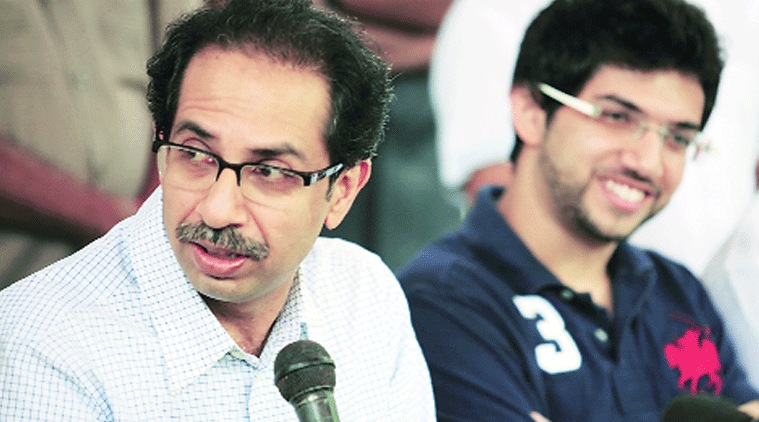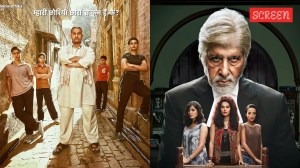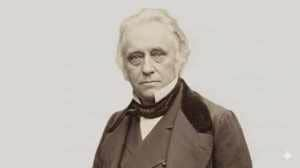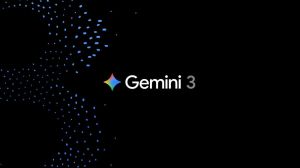Uddhav’s new-found aggression, as much a necessity as a tactic
It is in the shadow of Narendra Modi’s big win this summer that the 54-year-old leader’s public persona has undergone a rapid transformation.
 ‘BJP wanted to contest 135 seats and I have rejected it. Everything has an alternative. I have conveyed to BJP that I can’t go beyond a point’, Uddhav Thackeray said on Monday.
‘BJP wanted to contest 135 seats and I have rejected it. Everything has an alternative. I have conveyed to BJP that I can’t go beyond a point’, Uddhav Thackeray said on Monday.
By Kavitha Iyer
From all accounts, Shiv Sena president Uddhav Thackeray appears an unlikely candidate for a skirmish involving bitter allegations of lust for seats and an impending divorce. The wildlife photographer and nature lover is known to be soft-spoken, friendly with leaders across parties, hardly the hard-nosed negotiator and chief ministerial aspirant he has turned into suddenly.
It is in the shadow of Narendra Modi’s big win this summer that the 54-year-old leader’s public persona has undergone a rapid transformation. Barely weeks after the swearing-in of the union government, fliers and posters emerged in Mumbai that announced: “We won Delhi, now let’s win Maharashtra.” Not only were the images reminiscent of the first Ab Ki Baar Modi Sarkaar posters with the leader striking an aggressive pose with a pointed finger, but the Sena had also dropped all mention of the BJP. Additionally, the party appeared to have borrowed some elements from the Modi-centric BJP campaign, including a call for a “missed call” to a given number to register support.
Then, mid-June, at a party conclave in Mumbai, Shiv Sainiks raised slogans calling for Uddhav to be named the face of the saffron combine’s Maharashtra campaign. This came weeks after the death of the BJP’s Gopinath Munde. Weeks later, the “Utha Maharashtra” campaign of the Shiv Sena emerged. U-Tha, or awaken, is also a NaMo-style moniker for Uddhav Thackeray. And state BJP leaders admitted they were uneasy.
That this unmatched opportunity to seize control of Maharashtra cannot be squandered would certainly have had some bearing on Uddhav’s coming of age. Simultaneously, the party would also have been buoyed by a growing trickle of support for him. “Not only has the Sena cadre accepted Uddhav completely, but the young generation, the social media generation has also shown tremendous support for him,” says Anant Geete, the party’s senior-most parliamentarian. “The youth see him as a young, fresh leader.”
One television channel’s prepoll survey found Uddhav to be the most favoured CM candidate after incumbent CM Prithviraj Chavan, who incidentally scores high on personal popularity. Eighteen per cent of respondents reportedly wanted to see Uddhav as CM.
Geete says Uddhav’s new face is not one of hunger for political power. “By nature his interest is not in power, but in development. He has ideas for Maharashtra, and to execute those he wants the Sena to be in power and he wants to lead it from the front,” Geete tells The Indian Express.
But Uddhav’s “No. 1 state” dream for Maharashtra could not have come overnight. Even the reasoning that the Sena is now faced with the prospect of recapturing the space ceded by the MNS in the Lok Sabha elections does not really explain his sudden intransigence vis-a-vis the BJP’s demand for more seats.
Cadre-level Sainiks in Mumbai agree that at least some of the barbs questioning the Modi wave, including those in party mouthpiece Saamna, are prompted by a sense that the BJP’s juggernaut rolling through state after state threatens smaller parties, even an ally of 25 years.
Uddhav’s comment on Monday that this is make-or-break time for that alliance can be seen in that context: This is also a make-or-break moment for the Sena. “There is indeed a sense of insecurity behind Uddhav’s new position,” says B Venkatesh Kumar, political scientist and professor at TISS. “Where the BJP was a peripheral partner with dominant allies during the 1990s when it was attempting to make inroads in the national political scene, the party is now moving towards a single-party dominant system, akin to the Congress’s position of the 1960s. And its partners have now been given peripheral roles.”
Seen in the light of BJP president Amit Shah’s strategic schemes for the party growth in the states, Uddhav is fighting not for a chief ministerial chair but for the survival of his party. More seats in an arrangement before the polls, more MLAs, a Sainik as chief minister — these are now the bare minimum he needs to ensure that. A senior Sena legislator from Mumbai admits that this explains the declaration of ‘Mission 150’, the target cadres have set themselves in the 288-member assembly.
But the bravado notwithstanding, the numbers will be difficult to put up. For one, Uddhav will find himself cutting a solitary figure as campaigner-candidate-CM aspirant-Sena strategist rolled into one, posited against the BJP’s starcast of campaigners. Also, most admit the Modi wave may have slowed somewhat but is not dead. And Uddhav is bound to find at some point during his campaign that not all his 18 new MPs have the required depth of support, many of them having won riding the Modi wave. And many citizens view a BJP government at the Centre and the state as a good thing.
BJP leaders in Maharashtra are saying the Sena’s barbs at the Modi sarkar and doubts cast on the Modi wave are not acceptable. Actually, Uddhav appears inspired by the prime minister’s unapologetic seeking out of power. To paint his need for political power as thirst for an executive position to effect change could be as good a strategy as Modi’s.






- 01
- 02
- 03
- 04
- 05

























